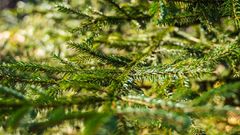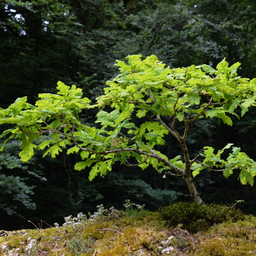
Checker Tree: Characteristics, use and meaning
Sorbus torminalis, also known as Checker Tree, is a very valuable deciduous tree.
Checker tree
Sorbus torminalis, commonly known as the Checker Tree, might not be the rarest, but it stands out for its wide presence across the country and its valuable hardwood. Its wood is highly prized, and it often thrives alongside other remarkable trees like the Sessile Oak, Ash, and Beech. These natural companions highlight the Checker Tree’s role in our woodlands, making it a cherished part of the forest landscape.
Why does EcoTree plant Checker Tree?
The fruit of the Checker Tree is edible and attracts many birds and small mammals, which feed on the berries in autumn and winter. This encourages a diversity of wildlife important for the balance of the forest ecosystem.
The Checker Tree is known for its ability to adapt to poor, dry soils and changing environments. In this way, it can help to strengthen the resilience of the forest in the face of extreme climatic conditions, such as drought or periods of extreme heat.
As a medium-sized tree, it also plays an important role in the layered structure of the forest. It can provide a partial canopy that protects young plants of other species from direct sunlight and bad weather.
Checker tree - Overview
Checker tree - Overview

Checker tree - Species requirements
Sorbus torminalis is a common species at low altitudes, but is rarer in south-eastern France. It is sometimes found at altitudes of up to 1,000 metres in Mediterranean climates. This tree loves the heat. However, it adapts to different soils. In western and central France, it will grow its roots in silty, sandy or stony soils with an acid pH. In the north and east of the country, on the other hand, it thrives in basic to slightly acidic pH.
It thrives best in thick brown calcareous soils or soils very rich in clay. In the wild, it can be found scattered in woods, hedgerows and pubescent oak groves. Foresters use it to enrich neutrophilous or acidiphilous beech-oak stands.
Checker Tree Wood
The berries produced by the Checker Tree and eagerly scattered by small mammals were used to make brandy and as a remedy for dysentery and diarrhoea.
This tree produces a very homogeneous, dense and hard wood. The sapwood is yellowish to reddish white, turning brown in air and light. The salmon-red heartwood takes on a reddish-brown colour when steamed.
This wood is easy to work with and resists rubbing. It has long been used to make machine parts, gear teeth, rollers, press parts and skittles. It has also been used to make taps and staves for white spirits.
Today, it is used in a number of specific crafts: decorative veneers, measuring and drawing instruments, piano mechanisms, organ pipes, billiard cues and rifle butts. It is also an excellent firewood.
Checker Tree's Symbolism
Traditionally, Elsbes or Sorbus torminalis has been associated with protective properties. In some cultures, it was used to ward off evil spirits and offer protection against negative influences. This symbolism stems in part from the tree's robustness and ability to withstand the elements.
The name "torminalis" comes from the Latin tormina, meaning "colic" or "intestinal pain". In the past, the fruit of the mountain ash tree was used in folk medicine to treat these ailments. By extension, the tree has become a symbol of healing and health.
Our selection of trees
Our goal is to enable anyone to do something that benefits nature and helps us to live in a more harmonious world. So why not become a tree owner in a European forest and help combat climate change?






Please note that this is promotional communication. See our notice of information.








